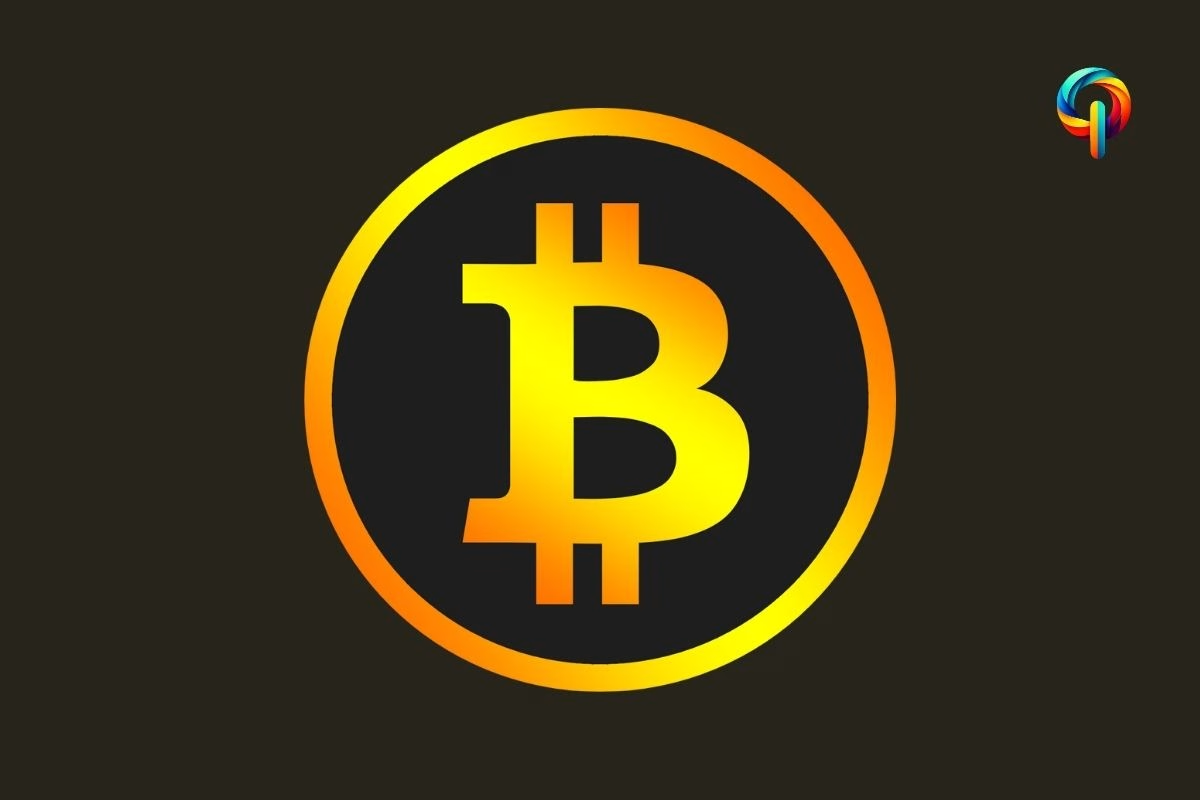
This article promotes digital minimalism, a philosophy advocating intentional technology use. It explains the concept, highlighting core principles like intentionality, mindfulness, and simplicity. The text details numerous benefits, including improved mental health, enhanced focus, and increased productivity. Practical steps for implementing digital minimalism, such as conducting a digital audit and setting boundaries, are provided, along with strategies for overcoming challenges like digital addiction and fear of missing out (FOMO). Finally, the article explores the future of digital minimalism, emphasizing its growing importance in a technology-saturated world.
Contents Of The Article
“How Does Digital Minimalism Work, and How Can It Help You Achieve Balance?”
Nowadays—our lives are more connected than ever. From endless social media scrolling to constant email notifications, it’s easy to feel overwhelmed by the digital noise. But what if there was a way to cut through the chaos and reclaim your time, focus, and peace of mind? Enter digital minimalism, a growing movement that’s helping people like you and me find balance in a hyper-connected world. If you’re ready to begin a minimalist lifestyle, this is the perfect place to start.
Digital minimalism isn’t about ditching technology altogether. Instead, it’s about being intentional with how we use it. Imagine a life where you’re no longer a slave to your phone, where every notification doesn’t demand your attention, and where you have the mental space to focus on what truly matters. Sounds refreshing, right? This is the essence of what it means to begin a minimalist lifestyle—creating a digital environment that supports your well-being and goals.
In this article, we’ll dive deep into what digital minimalism really means, why it’s becoming a game-changer for so many people, and how you can start applying its principles to your own life. Whether you’re feeling burnt out from screen time or just curious about living a more intentional digital life, this guide is for you. Let’s explore how digital minimalism can help you find the balance you’ve been craving and inspire you to begin a minimalist lifestyle today.
What Is Digital Minimalism?
Let’s be real—our screens have become a constant presence in our lives. From endless social media scrolling to the never-ending ping of notifications, it’s easy to feel like technology is controlling us instead of the other way around. That’s where digital minimalism comes in. It’s not just a buzzword; it’s a lifestyle shift that’s helping people like you and me take back control of our digital lives.
At its core, digital minimalism is about being intentional with how we use technology. It’s not about swearing off your smartphone or deleting all your apps. Instead, it’s about asking yourself: “Is this adding value to my life?” If the answer is no, it might be time to let it go. Think of it as a digital detox for your mind—a way to clear out the clutter and focus on what truly matters.
So, whether you’re feeling overwhelmed by screen time or just curious about living a more minimalist lifestyle, this section will break down what digital minimalism really means and how its principles can help you live a more focused, intentional life. Let’s dive in!
Definition of Digital Minimalism
What exactly is digital minimalism? In simple terms, it’s a philosophy that encourages mindful consumption of technology. It’s about using digital tools with purpose and clarity, rather than letting them dictate your time and attention.
Imagine this: instead of mindlessly scrolling through social media for hours, you use your phone to connect with loved ones, learn something new, or pursue a passion. That’s the essence of digital minimalism—simplifying your digital life so you can focus on what brings you joy and fulfillment.
But it’s not just about reducing screen time. It’s about technology decluttering—keeping only the apps, tools, and habits that truly serve you. By doing this, you create space for focused living, where your time and energy are spent on things that align with your values and goals.
Core Principles of Digital Minimalism
Now that we’ve defined digital minimalism, let’s talk about its core principles. These are the guiding ideas that make this philosophy so powerful:
- Intentionality:
This is the heart of digital minimalism. It’s about using technology with a clear purpose. Ask yourself: “Why am I using this app or tool? Is it adding value to my life?” If the answer isn’t a resounding “Yes!”, it might be time to rethink its place in your life. - Mindfulness:
Being mindful means paying attention to how technology affects your mental health, productivity, and relationships. Are you spending hours on Instagram and feeling drained afterward? That’s a sign it’s time to reassess. Digital minimalism encourages mindful technology use, where you’re in control, not your devices. - Simplicity:
Less is more. Digital minimalism is all about quality over quantity. Instead of having 10 apps that do similar things, choose one that works best for you. Simplify your digital life to reduce distractions and create more mental space for what truly matters.
By embracing these principles, you can start to declutter your digital world and focus on living a more intentional, meaningful life. It’s not about perfection—it’s about progress.
The Benefits of Digital Minimalism
Let’s be honest—our digital habits often leave us feeling drained, distracted, and overwhelmed. But what if there was a way to turn things around? That’s where digital minimalism comes in. By cutting out the noise and focusing on what truly matters, this lifestyle can bring some serious benefits to your life. From mental clarity to improved focus, the advantages of adopting digital minimalism are too good to ignore.
Think about it: how much time do you spend scrolling through social media or checking emails? Now imagine redirecting that time toward things that actually make you happy and fulfilled. Sounds amazing, right? Let’s dive into the specific benefits of digital minimalism and how it can transform your daily life.
Improved Mental Health
One of the biggest perks of digital minimalism is the positive impact it can have on your mental health. Let’s face it—constant notifications, endless scrolling, and the pressure to stay “connected” can take a toll on your emotional well-being.
Here’s how digital minimalism helps:
- Reduced Anxiety: By cutting back on screen time and limiting exposure to negative or overwhelming content, you can lower your stress levels and feel more at ease.
- Better Sleep: Spending less time on your phone or laptop before bed means fewer disruptions to your sleep cycle. Say goodbye to those late-night Instagram binges and hello to restful nights!
- Emotional Balance: When you’re not constantly bombarded by digital distractions, you have more mental space to process your thoughts and emotions. This can lead to a greater sense of calm and clarity.
In short, digital minimalism isn’t just about decluttering your devices—it’s about decluttering your mind. And who doesn’t want a little more peace in their life?
Enhanced Focus and Productivity
Ever feel like you’re constantly busy but never actually getting anything done? That’s where digital minimalism can work its magic. By eliminating unnecessary digital noise, you can reclaim your focus and get more done in less time.
Here’s how it works:
- Deep Work: Without constant interruptions from notifications or social media, you can dive into tasks that require your full attention. This is where the real magic happens—whether it’s finishing a project, learning a new skill, or simply enjoying a hobby.
- Time Management: When you’re intentional about how you use technology, you’re better able to prioritize your time. Instead of wasting hours on mindless scrolling, you can focus on what truly matters.
- Sense of Accomplishment: There’s nothing quite like the feeling of checking off a meaningful task from your to-do list. Digital minimalism helps you achieve that by keeping distractions at bay.
By embracing digital minimalism, you’re not just boosting your productivity—you’re also creating space for the things that bring you joy and fulfillment.
How to Practice Digital Minimalism
So, you’re ready to take control of your digital life and embrace digital minimalism? That’s awesome! But where do you start? Don’t worry—it’s easier than you think. With a few practical tips and a little intentionality, you can transform your relationship with technology and create a more balanced, fulfilling life.
Think of it like this: digital minimalism isn’t about giving up technology altogether. It’s about using it in a way that adds value to your life, rather than letting it take over. Ready to dive in? Let’s explore some simple yet powerful steps to help you get started on your digital decluttering journey.
Conduct a Digital Audit
Before you can make any changes, you need to know where you stand. That’s where a digital audit comes in. Think of it as a “spring cleaning” for your digital life.
Here’s how to do it:
- Track Your Screen Time: Use your phone’s built-in screen time tracker or an app to see how much time you’re spending on different activities. You might be surprised by the results!
- Evaluate Your Apps: Go through your phone, tablet, and computer. Ask yourself: “Do I really need this app? Does it add value to my life?” If the answer is no, it’s time to hit that delete button.
- Identify Stressors: Pay attention to which apps or activities leave you feeling drained or anxious. These are the ones you’ll want to minimize or eliminate.
By taking stock of your digital inventory, you’ll have a clear picture of what’s working—and what’s not. This is the first step toward creating a healthier, more intentional relationship with technology.
Set Boundaries and Limits
Let’s be real—technology has a way of creeping into every corner of our lives. That’s why setting clear boundaries is so important. Think of it as creating “guardrails” to keep your digital habits in check.
Here are some ideas to get you started:
- Tech-Free Zones: Designate certain areas of your home, like the dining room or bedroom, as tech-free zones. This helps create space for real-life connections and relaxation.
- Screen Time Limits: Use apps or settings to limit how much time you spend on social media or other distracting platforms. Even small changes, like cutting back by 30 minutes a day, can make a big difference.
- Digital Curfews: Set a specific time each night to put your devices away. This not only helps you unwind but also improves your sleep quality.
Remember, boundaries aren’t about restriction—they’re about creating freedom. By setting limits, you’re giving yourself permission to focus on what truly matters.
Prioritize Meaningful Engagement
At its core, digital minimalism is about quality over quantity. It’s not about how much time you spend online—it’s about how you spend that time.
Here’s how to focus on meaningful engagement:
- Connect with Loved Ones: Use technology to strengthen relationships, whether it’s a video call with a friend or a heartfelt message to a family member.
- Pursue Your Passions: Instead of mindlessly scrolling, use your screen time to learn something new, explore a hobby, or work toward a personal goal.
- Be Intentional: Before opening an app or checking your phone, ask yourself: “Why am I doing this? Is it adding value to my life?” This simple question can help you stay focused on what truly matters.
By prioritizing purposeful use of technology, you’ll find that your digital life becomes more fulfilling—and less overwhelming.
Challenges of Adopting Digital Minimalism
Let’s be real—adopting digital minimalism isn’t always a walk in the park. In a world where technology is everywhere, breaking old habits and embracing a more intentional lifestyle can feel like an uphill battle. But here’s the thing: every worthwhile change comes with its challenges. The key is to recognize them, understand why they happen, and find ways to overcome them.
Whether it’s the pull of digital addiction or the nagging fear of missing out (FOMO), these obstacles can make it tough to stick to your digital minimalism goals. But don’t worry—you’re not alone, and there are practical ways to tackle these challenges head-on. Let’s dive into the most common hurdles and how you can overcome them.
Breaking Digital Addiction
Let’s face it—many of us are hooked on our devices. Whether it’s the endless scroll of social media or the constant ping of notifications, breaking free from digital addiction can feel like trying to quit caffeine cold turkey. But here’s the good news: it’s absolutely possible, and the rewards are worth it.
Here’s how to start:
- Acknowledge the Habit: The first step is recognizing that you’re spending too much time on your devices. Be honest with yourself about how often you reach for your phone without even thinking.
- Set Small Goals: Instead of going cold turkey, start small. Try reducing your screen time by 15 minutes a day or designating specific times to check your phone.
- Replace the Habit: Find healthier alternatives to fill the time you’d usually spend scrolling. Read a book, go for a walk, or try a new hobby.
- Practice Self-Discipline: It’s not easy, but reminding yourself why you’re doing this—whether it’s for better mental health or more free time—can help you stay on track.
Breaking digital dependency isn’t about perfection; it’s about progress. Every small step you take brings you closer to a more balanced, intentional life.
Managing FOMO (Fear of Missing Out)
Ah, FOMO—the sneaky little voice in your head that says, “What if you miss something important?” Whether it’s a social media post, a group chat, or the latest news, FOMO can make it incredibly hard to disconnect. But here’s the truth: you’re not missing out on as much as you think.
Here’s how to tackle FOMO:
- Shift Your Perspective: Instead of focusing on what you might miss, think about what you’re gaining—more time, better focus, and deeper connections with the people and activities that truly matter.
- Limit Social Media Use: Set specific times to check social media, and stick to them. This helps reduce the urge to constantly scroll and keeps you in control.
- Practice Mindful Consumption: Before opening an app, ask yourself: “Is this adding value to my life?” If the answer is no, close the app and do something more meaningful instead.
- Celebrate Offline Moments: When you’re not glued to your screen, you have more time to enjoy real-life experiences. Whether it’s a coffee date with a friend or a quiet evening with a book, these moments are what truly matter.
By focusing on the benefits of digital minimalism—like improved mental health and stronger relationships—you can start to see FOMO for what it really is: a fear that’s often overblown and unnecessary.
The Future of Digital Minimalism
Let’s face it—technology isn’t going anywhere. In fact, it’s only going to become more integrated into our lives. But here’s the exciting part: as we become more aware of the impact technology has on our mental health and well-being, digital minimalism is emerging as a powerful counterbalance. It’s not just a trend; it’s a movement toward mindful living in a tech-driven world.
So, what does the future hold for digital minimalism? From a growing focus on digital wellness to the rise of tools that support intentional tech use, the possibilities are endless. Let’s take a closer look at how digital minimalism is evolving and what it means for you.
Growing Awareness of Digital Wellness
Over the past few years, there’s been a seismic shift in how we think about technology. Gone are the days when more screen time was seen as a badge of honor. Today, people are waking up to the fact that constant connectivity can take a toll on our mental health, relationships, and overall well-being.
This growing awareness is fueling the rise of digital wellness—a holistic approach to using technology in a way that supports, rather than harms, our lives. Here’s how it’s shaping the future:
- Mental Health Focus: More people are recognizing the link between excessive screen time and issues like anxiety, stress, and burnout. As a result, practices like digital minimalism are becoming mainstream.
- Tech Balance: The idea of “balance” is taking center stage. Instead of completely cutting out technology, people are looking for ways to use it mindfully and intentionally.
- Holistic Well-Being: Digital wellness isn’t just about reducing screen time; it’s about creating a healthier relationship with technology. This includes everything from setting boundaries to prioritizing meaningful interactions.
As this awareness continues to grow, digital minimalism is poised to become a key part of how we navigate the digital world.
Integration with Emerging Technologies
Here’s where things get really interesting: technology itself is starting to support digital minimalism. That’s right—the same tools that once pulled us into endless scrolling are now helping us break free.
Here’s how emerging technologies are playing a role:
- AI-Driven Productivity Tools: Apps and platforms powered by artificial intelligence are helping us work smarter, not harder. From focus-enhancing tools to apps that block distractions, these innovations are making it easier to stay intentional with our tech use.
- Minimalist Design Trends: Many tech companies are embracing minimalist design—clean, simple interfaces that prioritize functionality over flashy features. This shift not only reduces digital clutter but also encourages more mindful usage.
- Smart Devices with Purpose: Think smartwatches that remind you to take a break or apps that track your screen time and suggest healthier habits. These tools are designed to promote tech optimization and support your digital minimalism goals.
The future of digital minimalism isn’t about rejecting technology—it’s about using it in a way that aligns with your values and enhances your life. And with the right tools and mindset, that future is closer than you think.
More FAQ On Digital Minimalism
1. What is digital minimalism?
Digital minimalism is a lifestyle philosophy that encourages intentional and mindful use of technology. It’s about cutting out the digital clutter—like unnecessary apps, endless scrolling, and constant notifications—so you can focus on what truly matters. Instead of letting technology control your time and attention, digital minimalism helps you take charge. It’s not about completely disconnecting; it’s about using technology in a way that aligns with your values and goals. Whether it’s spending more time with loved ones, pursuing hobbies, or simply enjoying some peace and quiet, digital minimalism is all about creating a more balanced and fulfilling life.
2. How does digital minimalism improve mental health?
Digital minimalism can have a profound impact on your mental health. In today’s hyper-connected world, constant notifications, social media pressure, and the urge to stay “plugged in” can lead to stress, anxiety, and burnout. By practicing digital minimalism, you reduce these digital stressors and create space for mental clarity and calm. For example, cutting back on screen time, especially before bed, can improve your sleep quality. Setting boundaries around technology use can help you feel more present and focused. Over time, these small changes add up, leading to better emotional well-being and a healthier relationship with technology.
3. What are some practical steps to practice digital minimalism?
If you’re ready to embrace digital minimalism, here are some practical steps to get started. First, conduct a digital audit. Take a close look at your apps, devices, and online habits. Ask yourself which ones add value to your life and which ones are just time-wasters. Next, set boundaries. This could mean creating tech-free zones in your home, setting screen time limits, or establishing a digital curfew. Finally, prioritize meaningful engagement. Focus on activities that align with your values, like connecting with loved ones or pursuing hobbies, rather than mindlessly scrolling through social media. Remember, digital minimalism is a journey, not a destination—start small and build from there.
4. What are the challenges of digital minimalism?
While digital minimalism offers many benefits, it’s not without its challenges. One of the biggest hurdles is breaking digital addiction. Many of us are so used to constantly checking our phones or scrolling through social media that it can feel overwhelming to cut back. Another challenge is managing FOMO (fear of missing out). The fear of missing out on social media updates, group chats, or the latest news can make it hard to disconnect. Finally, staying consistent can be tough. Change doesn’t happen overnight, and it’s easy to slip back into old habits. The key is to stay committed, remind yourself why you started, and celebrate small wins along the way.
5. What is the future of What Is Digital Minimalism, and How Can It Help You Find Balance??
The future of digital minimalism looks promising as more people recognize the importance of digital wellness. With growing awareness of how technology impacts mental health, there’s a shift toward using technology more intentionally. Emerging tools and trends are also supporting this movement. For example, AI-driven productivity tools are helping people work more efficiently, while minimalist app designs are reducing digital clutter. Additionally, there’s a cultural shift toward valuing quality over quantity when it comes to technology use. As these trends continue to evolve, digital minimalism is likely to become an integral part of how we navigate the digital world.
6. Can digital minimalism improve productivity?
Yes, digital minimalism can significantly boost productivity. By reducing distractions—like unnecessary apps, constant notifications, and mindless scrolling—you create more mental space to focus on meaningful tasks. This allows you to engage in deep work, where you can fully concentrate and produce high-quality results. Digital minimalism also encourages better time management. When you’re intentional about how you use technology, you’re able to prioritize your time and energy more effectively. Over time, these changes can lead to greater efficiency, a stronger sense of accomplishment, and a more balanced work-life routine.
7. Is digital minimalism for everyone?
Digital minimalism is a flexible philosophy that can benefit almost anyone, but it’s not a one-size-fits-all solution. The key is to adapt it to your own lifestyle and needs. For busy professionals, it might mean reducing distractions to boost productivity. For parents, it could involve creating tech-free family time to strengthen relationships. For students, it might focus on staying focused while studying and avoiding social media burnout. The beauty of digital minimalism is that it’s customizable. Whether you’re looking to improve your mental health, enhance productivity, or simply live more intentionally, digital minimalism offers tools and principles that can help you achieve your goals.
Conclusion: Embrace Digital Minimalism for a Balanced, Intentional Life
Let’s be honest—living in a hyper-connected world isn’t always easy. The constant buzz of notifications, the endless scroll of social media, and the pressure to stay “plugged in” can leave us feeling drained and distracted. But here’s the good news: digital minimalism offers a way out. It’s not about rejecting technology; it’s about reclaiming your time, focus, and peace of mind.
By embracing digital minimalism, you’re choosing to live with intention. You’re saying no to the noise and yes to the things that truly matter—whether it’s spending quality time with loved ones, pursuing your passions, or simply enjoying a moment of quiet. It’s about creating a life that feels balanced, meaningful, and uniquely yours.
So, where do you start? Begin small. Conduct a digital audit, set boundaries, and focus on meaningful engagement. Remember, it’s not about perfection—it’s about progress. Every step you take toward mindful technology use is a step toward a happier, healthier you.
The future of digital minimalism is bright, and it’s yours to shape. As technology continues to evolve, so too can your relationship with it. With the right tools, mindset, and a little self-discipline, you can create a digital life that works for you, not against you.
So, what are you waiting for? Take a deep breath, put down your phone, and start your journey toward digital minimalism today. Your future self will thank you.





